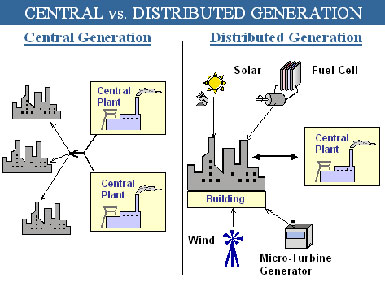In a signal of how important distributed energy is becoming, California is the first state to encourage utilities to aggregate energy from small renewable energy systems for sale on the wholesale electricity market.
Last week, the grid operator – California Independent System Operator Corp.’s (ISO) Board of Governors – approved rules that allow utilities (and others) to "bundle" electricity produced on-site at homes and businesses to meet the threshold for wholesale prices.
That means electricity from rooftop solar, batteries, demand response and even plug-in vehicles will be sold as aggregated distributed energy sources. "ISO recognizes that distributed energy resources are growing and are an important aspect of the future resource mix," they say.
"With the rapidly evolving grid and quantum growth in distributed generation, this framework for integrating smaller renewable resources onto the high voltage grid demonstrates a significant step in re-designing our energy future with lower carbon emissions and helping California meet its clean energy goals," says Steve Berberich, CEO of ISO. "This proposal encourages innovation and entrepreneurs to explore opportunities within the wholesale market by combining resources that individually would be too small to participate on their own."
It also gives ISO the ability to use a broader array of resources to balance supply with demand, as well as integrate more renewable energy into the power grid.

California is home to half the solar installed in the US, powering 2.5 million homes and businesses, according to US Solar Market Insight 2014 Year in Review. About 60% of its 10 gigawatts comes from homes, a third from businesses and a third from utility-scale projects. Small solar installations rose by 50% last year, according to Bloomberg New Energy Finance.
California is in the process of raising its Renewable Portfolio Standard from 33% by 2020 to 50% by 2030.
New York is implementing the same plan on distributed energy, and also has a new goal of 50% renewables by 2030.
Read ISO’s memo on the subject:
